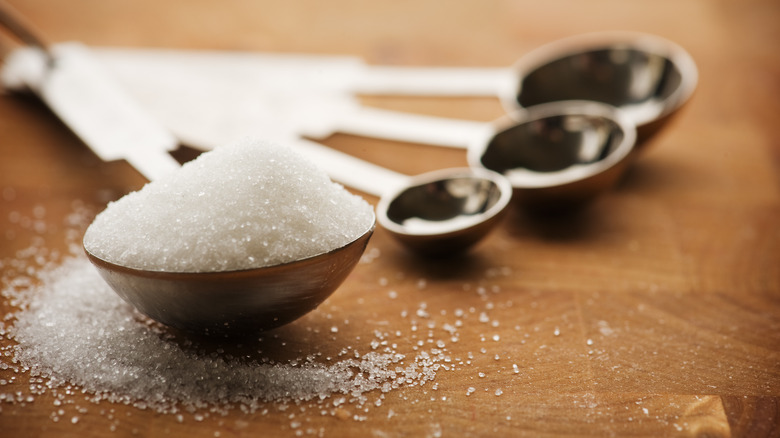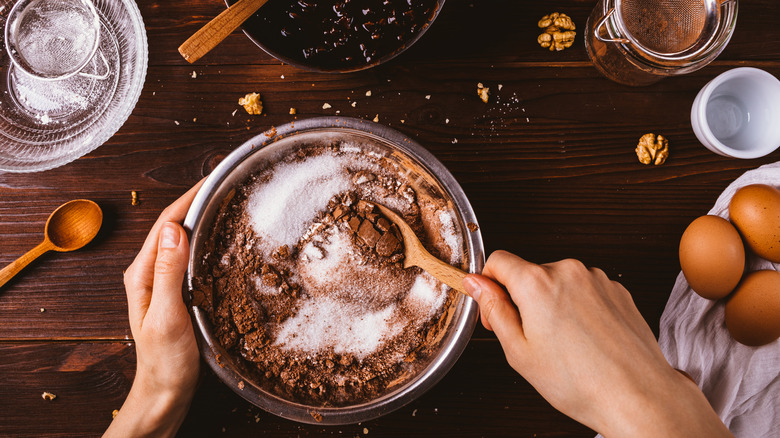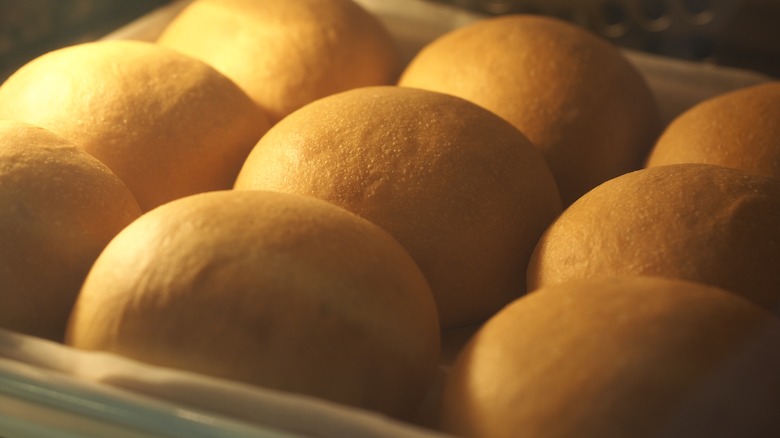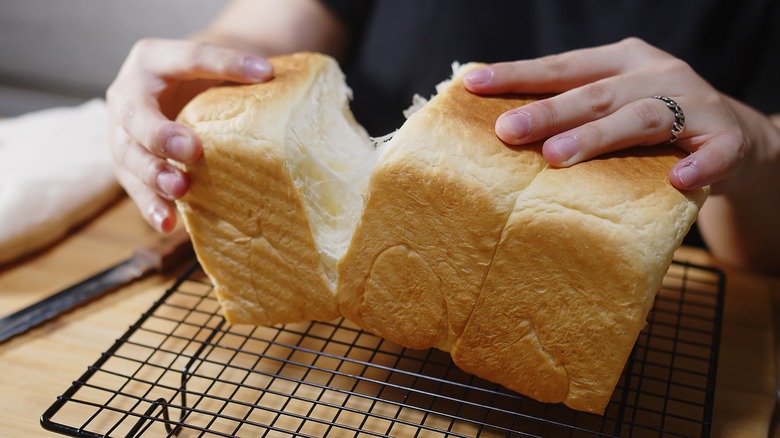Sugar Does Way More For Baked Goods Than Making Them Sweet
If you're into baking, you're used to dealing with a lot of sugar. Countless recipes call for it in some form, even in some cases where the food in question is savory, like bread or biscuits. Considering that diets high in sugar are associated with a number of adverse health effects, you might question whether all this sugar is strictly necessary, and if you couldn't reduce or outright eliminate it in certain baked goods. Sure, it makes sense in a batch of cookies, but do you really need sugar in your sandwich bread, pretzels, and bagels? The answer, in short, is yes.
People often think of sugar as servicing their sweet tooth alone, but it serves many purposes beyond that. Just as salt does more than make things salty — enhancing other flavors, tenderizing meats, and preserving perishable items – sugar too performs multiple roles in the kitchen, albeit in its own unique ways. Changing the amount of sugar in your baked goods can have a far greater impact than you might imagine, from affecting the appearance of your dish to altering its consistency and taste.
Sugar accentuates other flavors
It's easy to assume that sugar has a singular role when it comes to flavor. Sugar makes things sweet, and that's that. However, the reality is more nuanced, as sugar can have a profound effect on the other elements in a given dish. Sugar accentuates flavors, much like salt, and when you cut it from a recipe, the other ingredients can fade substantially, turning the food dull. Sugar also plays a vital role in counterbalancing tastes, particularly its ability to mellow sourness and bitterness. This effect is especially noticeable in chocolate-filled baked goods, where sugar serves to balance the natural bitterness of cocoa. If you cut too much sugar from brownies or chocolate cake, the end result can become unpleasantly bitter.
Finally, even the taste of sugar itself is variable. While it is straight-up sweet in its raw form, sugar takes on a more complex flavor when you introduce it to the heat of an oven. The sweetness becomes more subtle, notes that are bitter and sour come forward, and it transforms from an inodorous substance into something dark, toasty, and powerfully scented.
Sugar changes the color of baked goods
Those who bake often aim for items to have a golden brown color, particularly in the case of bread crusts. There are two main chemical processes responsible for the browning of foods — caramelization and the Maillard reaction — and both depend on sugar. Caramelization occurs when sugar reaches a temperature of around 340 degrees Fahrenheit (this can vary a bit depending on the type of sugar you're using), turning it golden brown. The Maillard reaction is a very similar process, but it also involves amino acids and occurs at a slightly lower temperature (around 300 degrees Fahrenheit). Both processes usually occur in tandem.
Caramelization and the Maillard reaction affect more than the color of your baked goods. They can dramatically transform the flavor of foods as well. The maltiness that we seek in many types of bread, as well as the roasted, nutty notes that enhance numerous breads, cookies, and cakes, are all byproducts of caramelization and the Maillard reaction. While sugar can begin as an overwhelmingly saccharine ingredient, these two chemical reactions create a much more nuanced range of flavors. Color and flavor are also connected: The darker the browning, the more robust the flavor.
Sugar influences texture
Sugar is hygroscopic, which means it attracts and retains water. By holding in moisture, sugar keeps baked goods soft and fluffy while also extending their shelf life. This is not always essential, but often desirable. Consider the difference in shelf life between a baguette, which typically contains little to no sugar and goes stale after only a day, and a sweet Hawaiian roll, which stays soft for far longer (about a week or two).
Sugar also influences the airiness of baked goods in a few different ways. When you add active dry yeast to a recipe, you'll usually be prompted to add some sugar as well. This will feed the yeast, speeding up its activity and helping the dough rise. In meringues and angel food cakes, sugar is used to stabilize egg whites, retaining moisture while the proteins firm up into the lofty forms we desire (sugar's hygroscopic properties are why meringues sometimes look like they're sweating). And if you've ever made cookies, you've probably been directed to beat butter with sugar. This aerates the dough because the grains of sugar trap little pockets of air between the fat molecules in the butter. Eliminate the sugar from any of these three methods and you'll be left with very dense baked goods — there's nothing sweet about that.



